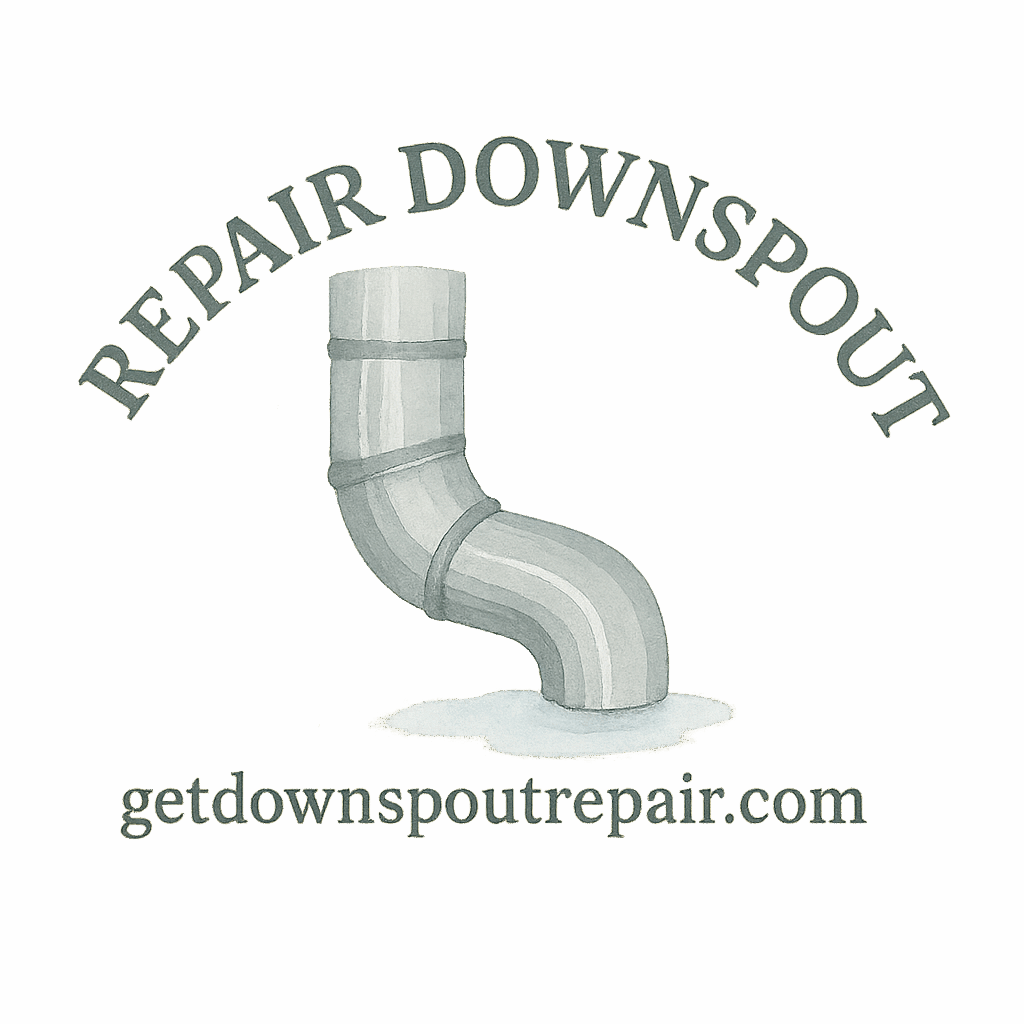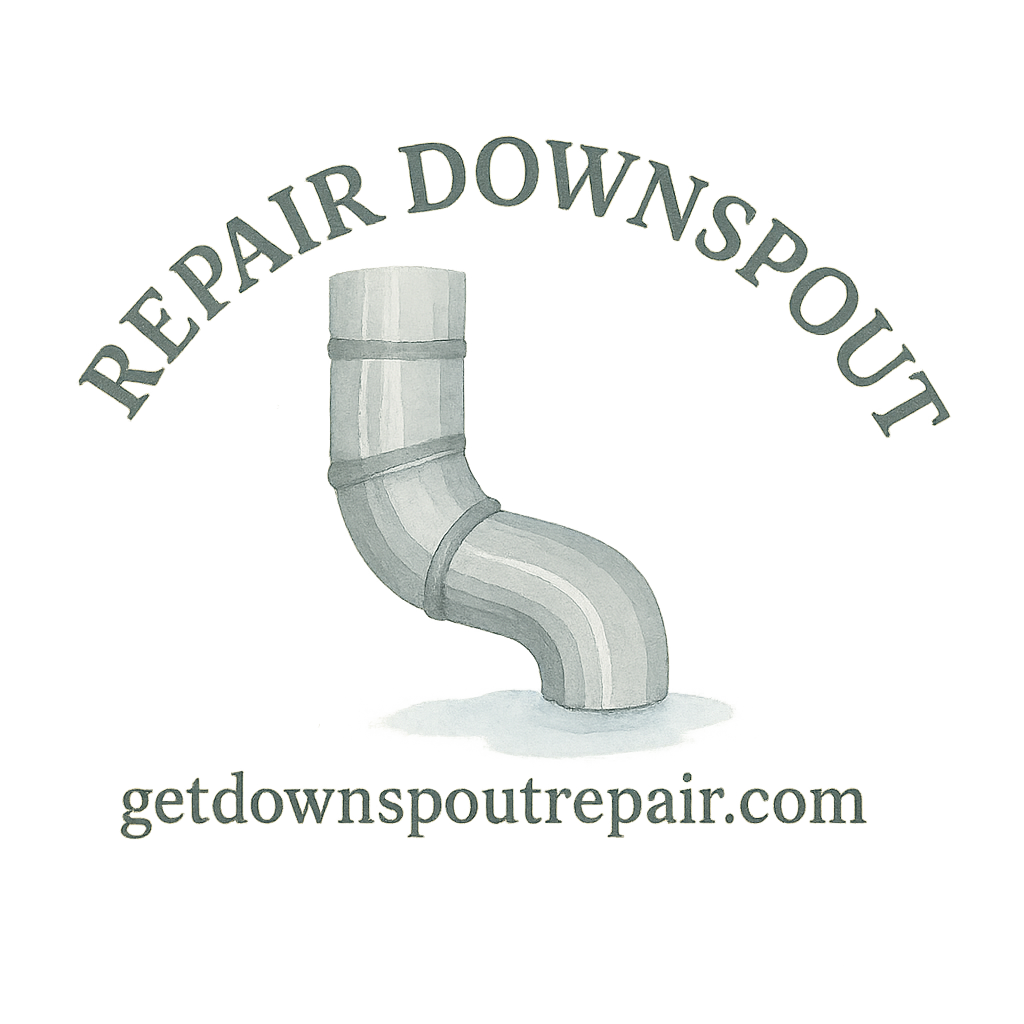If you’ve ever seen water pooling around your foundation after a heavy rain, chances are your downspouts are trying to tell you something. A properly working downspout is like your home’s drainage highway—it directs water safely away from your house. But what happens when cracks, clogs, or misalignments get in the way? That’s where the right DIY downspout repair products come in.
In this guide, we’ll explore 8 products that professionals actually recommend for homeowners who want to tackle repairs on their own. From sealants to brackets, and from flexible extensions to premium tool kits, you’ll discover everything you need to fix issues without always calling a contractor.
Why Downspout Repair Matters
The Role of Downspouts in Home Drainage
Think of downspouts as the veins of your gutter system. Without them, rainwater would simply overflow, eroding soil, flooding basements, and causing structural issues. Repairing downspouts isn’t just about convenience—it’s about protecting your entire property.
Common Downspout Problems Homeowners Face
Here are a few frequent culprits:
- Leaks at seams or joints
- Rust and corrosion in older metal downspouts
- Misalignment due to loose brackets
- Blockages from leaves and debris
Sound familiar? Then you’ll want to know the best DIY downspout repair products to tackle these headaches head-on.
Choosing the Right DIY Downspout Repair Products
What to Look for in Quality Repair Tools
Not all repair products are created equal. Professionals recommend looking for:
- Durability (weather-resistant and long-lasting)
- Ease of use (designed for quick DIY fixes)
- Compatibility with your downspout material (aluminum, vinyl, or steel)
Cost vs. Durability: Striking the Balance
Sure, you could grab the cheapest fix on the shelf, but will it last through the next storm? The best products balance affordability with proven effectiveness—keeping your wallet and your foundation safe.
8 DIY Downspout Repair Products Professionals Recommend
1. Downspout Sealants and Caulks
Cracks and leaks in seams are some of the most common downspout problems.
Best Uses of Sealants
Sealants are perfect for patching small leaks, sealing seams, and preventing water from sneaking through tiny gaps.
Professional Tips for Application
- Clean and dry the area first
- Apply a smooth, even bead of sealant
- Allow proper curing time before testing with water
👉 Pro Tip: Choose weather-resistant sealants for long-lasting results.
2. Gutter and Downspout Brackets
Loose or sagging downspouts are not just ugly—they’re dangerous for drainage.
Why Stability Matters
Brackets keep your downspout firmly attached to the wall, preventing stress on seams and joints.
Easy DIY Installation
- Mark where the bracket should go
- Drill pilot holes
- Screw in securely and reattach the downspout
3. Flexible Downspout Extensions
Sometimes, water exits too close to the foundation. That’s where extensions shine.
Preventing Water Damage
By directing water several feet away, you reduce the risk of soil erosion and basement flooding.
How to Attach Properly
Just slip the extension onto the bottom of your downspout and adjust the length as needed. It’s that simple.

4. Splash Blocks and Drainage Mats
Even with extensions, you need extra protection at the base.
Affordable Drainage Protection
Splash blocks or mats absorb the force of falling water and guide it away safely.
Preventing Foundation Issues
This little add-on can save you thousands by reducing water pooling near your home.
5. Leaf Guards and Strainers
Clogged downspouts are the root of countless gutter nightmares.
Keeping Debris Out
Leaf guards and strainers prevent leaves, sticks, and even small critters from blocking your system.
Reducing Clogging Risks
Less clogging = less cleaning. That means fewer headaches and less water backing up onto your roof.
6. Downspout Elbows and Connectors
Got awkward angles or misdirected flow? Elbows and connectors are your best friends.
Adjusting Water Flow Direction
They let you reroute water exactly where you want it—away from walkways, driveways, or garden beds.
Easy Fix for Misalignment
Most connectors simply snap or screw in place. No advanced tools needed.
7. Pipe Patch Kits
When your downspout springs a leak, a patch kit saves the day.
Fixing Cracks and Leaks Quickly
These kits usually include adhesive patches or wraps that bond to metal or vinyl.
When to Use a Patch Kit
If the damage is minor, patch it. But if you see large rust holes, replacement may be the smarter move.
8. Premium Repair Tool Kits
Every DIYer should have a basic repair kit.
Essential Tools Every DIYer Needs
- Screwdriver set
- Caulk gun
- Tin snips (for cutting metal)
- Safety gloves
Why Pros Recommend Quality Gear
Cheap tools can slow you down and cause mistakes. Premium gear makes the job safer and faster.
Step-by-Step DIY Downspout Repair Using These Products
Preparation and Safety Measures
Always wear gloves, safety glasses, and use a stable ladder.
Cleaning Before Repair
Flush out dirt, leaves, and debris before sealing or attaching anything.
Applying the Right Product
Match the product to the problem: sealant for leaks, brackets for stability, extensions for drainage.
Checking for Long-Term Effectiveness
After each repair, test with a hose to ensure water flows properly.
Mistakes to Avoid When Using DIY Downspout Products
Overusing Sealant
Too much sealant looks messy and may not hold well.
Ignoring Drainage Slope
Make sure water actually flows downhill—otherwise, you’ll end up with standing water.
Skipping Regular Inspections
A once-a-year checkup is not enough. Inspect after every major storm.
Professional Advice on DIY Repairs
When to Call a Licensed Contractor
If you notice major cracks, extensive rust, or structural damage, don’t risk it—call a pro. See more here: licensed contractor help.
Combining DIY with Expert Help
Handle small fixes yourself, but schedule regular inspections with a professional for peace of mind.
Budget-Friendly Tips for Downspout Repairs
Buying Quality Products Without Overspending
Shop smart—look for mid-range gear with strong reviews.
Knowing When to Repair vs. Replace
Sometimes replacement is the cheaper long-term choice. For cost breakdowns, see: downspout repair costs and materials.
Long-Term Maintenance for Healthy Downspouts
Seasonal Cleaning Tips
Clean gutters at least twice a year—spring and fall are non-negotiable.
Preventing Downspout Neglect
Neglect is the #1 killer of downspouts. Stay proactive with downspout maintenance tips.
Conclusion
Repairing your downspouts doesn’t have to be complicated—or expensive. With the 8 DIY downspout repair products professionals recommend, you can handle most small problems on your own. From sealants and brackets to flexible extensions and patch kits, these tools save you money, protect your foundation, and keep your home safe from water damage.
Remember, the best repair is the one done before disaster strikes. A little effort today can save you thousands tomorrow.
For more guides, visit Get Downspout Repair and explore helpful resources on DIY fixes, drainage protection, and professional help.
FAQs
1. Can I repair a cracked downspout myself?
Yes! With patch kits and sealants, small cracks are easy to fix without a pro.
2. How often should I check my downspouts?
After every major storm and at least twice a year during gutter cleanings.
3. What’s the cheapest DIY downspout fix?
A tube of sealant or a simple splash block—both under $20.
4. Do flexible downspout extensions really work?
Absolutely. They’re one of the easiest and most effective DIY solutions.
5. Can I install leaf guards without tools?
Most leaf strainers just snap into place—no special tools required.
6. When should I replace instead of repair?
If your downspout has major rust holes or multiple weak spots, replacement is better long term.
7. Are premium repair kits worth it?
Yes. They save time, improve safety, and prevent mistakes that cost more later.


